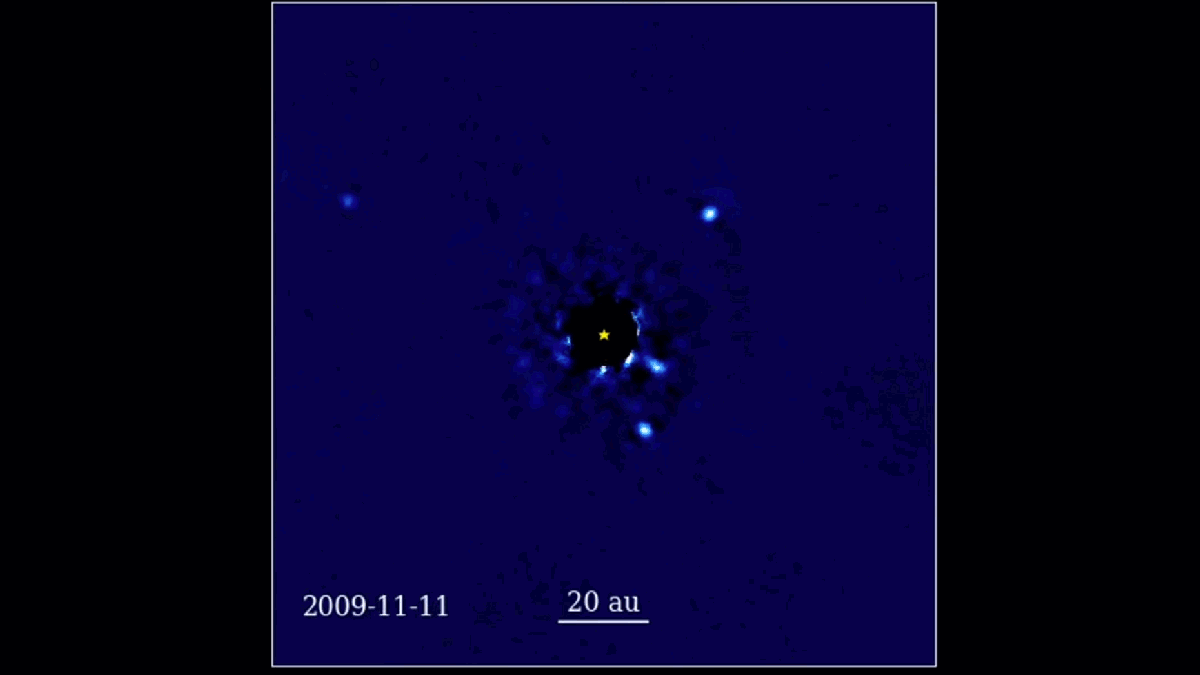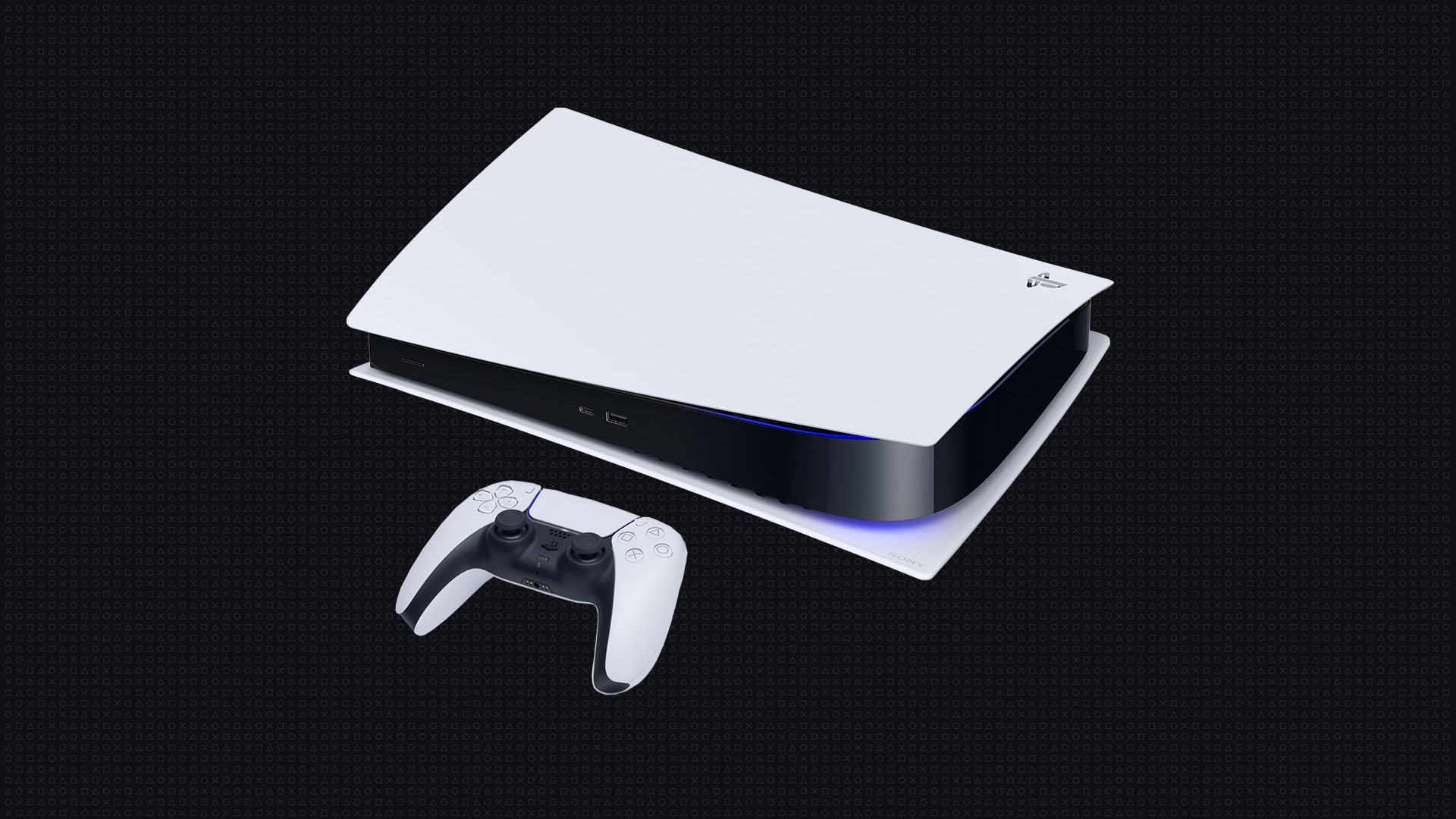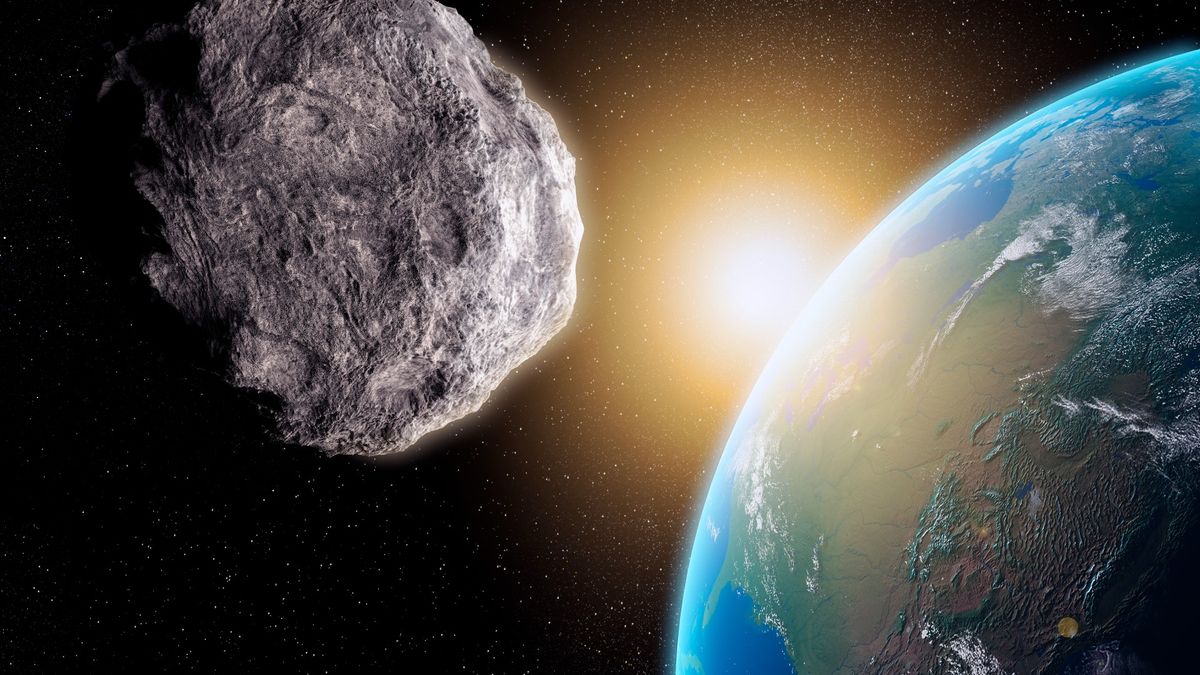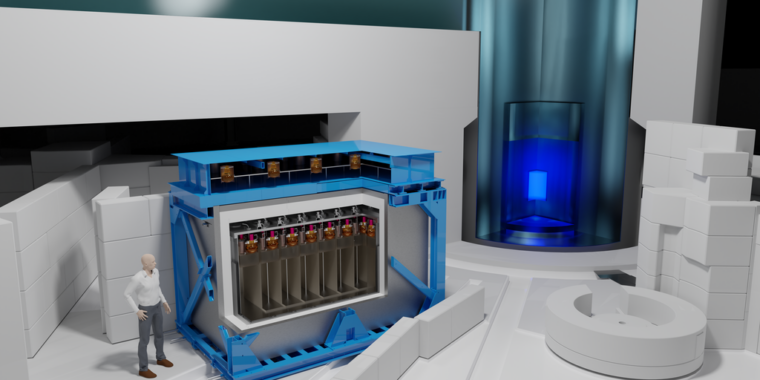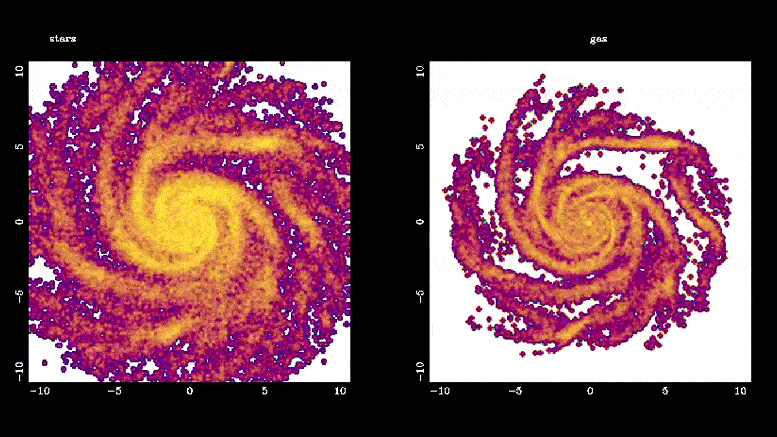
توضح هذه المحاكاة كيف تتشكل القضبان النجمية (على اليسار) وحقن الغاز بالقضيب (على اليمين). تلعب القضبان النجمية دورًا مهمًا في التطور النجمي عن طريق ضخ الغاز في المناطق المركزية من المجرة ، حيث يتحول بسرعة إلى نجوم جديدة ، وعادة ما يكون أسرع من 10 إلى 100 مرة من معدل المجرات الأخرى. تساعد القضبان بشكل غير مباشر في نمو الثقوب السوداء الهائلة عن طريق توجيه الغاز إلى مراكز المجرات. الائتمان: فرانسواز كومبس ، مرصد باريس
صور جديدة من هذا[{” attribute=””>NASA’s James Webb Space Telescope (JWST) reveal for the first time galaxies with stellar bars — elongated features of stars stretching from the centers of galaxies into their outer disks — at a time when the universe was a mere 25% of its present age. The finding of so-called barred galaxies, similar to our Milky Way, this early in the universe will require astrophysicists to refine their theories of galaxy evolution.
Prior to JWST, images from the Hubble Space Telescope had never detected bars at such young epochs. In a Hubble image, one galaxy, EGS-23205, is little more than a disk-shaped smudge, but in the corresponding JWST image taken this past summer, it’s a beautiful spiral galaxy with a clear stellar bar.
“I took one look at these data, and I said, ‘We are dropping everything else!’” said Shardha Jogee, professor of astronomy at The University of Texas at Austin. “The bars hardly visible in Hubble data just popped out in the JWST image, showing the tremendous power of JWST to see the underlying structure in galaxies,” she said, describing data from the Cosmic Evolution Early Release Science Survey (CEERS), led by UT Austin professor, Steven Finkelstein.

The power of JWST to map galaxies at high resolution and at longer infrared wavelengths than Hubble allows it look through dust and unveil the underlying structure and mass of distant galaxies. This can be seen in these two images of the galaxy EGS23205, seen as it was about 11 billion years ago. In the HST image (left, taken in the near-infrared filter), the galaxy is little more than a disk-shaped smudge obscured by dust and impacted by the glare of young stars, but in the corresponding JWST mid-infrared image (taken this past summer), it’s a beautiful spiral galaxy with a clear stellar bar. Credit: NASA/CEERS/University of Texas at Austin
The team identified another barred galaxy, EGS-24268, also from about 11 billion years ago, which makes two barred galaxies existing farther back in time than any previously discovered.
In an article accepted for publication in The Astrophysical Journal Letters, they highlight these two galaxies and show examples of four other barred galaxies from more than 8 billion years ago.
“For this study, we are looking at a new regime where no one had used this kind of data or done this kind of quantitative analysis before,” said Yuchen “Kay” Guo, a graduate student who led the analysis, “so everything is new. It’s like going into a forest that nobody has ever gone into.”
Bars play an important role in galaxy evolution by funneling gas into the central regions, boosting star formation.
“Bars solve the supply chain problem in galaxies,” Jogee said. “Just like we need to bring raw material from the harbor to inland factories that make new products, a bar powerfully transports gas into the central region where the gas is rapidly converted into new stars at a rate typically 10 to 100 times faster than in the rest of the galaxy.”
Bars also help to grow supermassive black holes in the centers of galaxies by channeling the gas part of the way.
https://www.youtube.com/watch؟v=iBhsUQL1YPE
تُظهر هذه المحاكاة كيف تتشكل القضبان النجمية (على اليسار) وحقن الغاز بالقضيب (على اليمين). تلعب القضبان النجمية دورًا مهمًا في التطور النجمي عن طريق ضخ الغاز في المناطق المركزية من المجرة ، حيث يتم تحويلها بسرعة إلى نجوم جديدة ، وعادة ما تكون أسرع من 10 إلى 100 مرة من معدل المجرات الأخرى. تساعد القضبان بشكل غير مباشر في نمو الثقوب السوداء الهائلة عن طريق توجيه الغاز إلى مراكز المجرات. الائتمان: فرانسواز كومبس ، مرصد باريس
يؤدي اكتشاف القضبان في مثل هذه الأوقات المبكرة إلى زعزعة سيناريوهات تطور المجرات بعدة طرق.
قال جوغي: “هذا الاكتشاف للقضبان البدائية يعني أن نماذج تطور المجرات لها مسار جديد عبر القضبان لتسريع إنتاج النجوم الجديدة في الأوقات المبكرة”.
إن وجود هذه القضبان المبكرة يتحدى النماذج النظرية لأنها يجب أن تجعل الفيزياء بين النجوم صحيحة للتنبؤ بالوفرة الدقيقة للأشرطة. سيختبر الفريق نماذج مختلفة في ورقتهم التالية.

تعرض مجموعة من صور JWST ستة أمثلة من المجرات المحظورة ، اثنان منها يمثلان أوقات مشاهدة عالية جدًا. تشير الملصقات الموجودة في أعلى يسار كل رقم إلى وقت مراقبة كل مجرة ، من 8.4 إلى 11 مليار سنة مضت (Gyr) ، عندما كان الكون 40٪ إلى 20٪ فقط من عمره الحالي. الائتمان: ناسا / CEERS / جامعة تكساس في أوستن
يمكن لـ JWST الكشف عن الهياكل في المجرات البعيدة أكثر من هابل لسببين: الأول ، المرآة الأكبر تمنحه قدرة أكبر على جمع الضوء ، مما يسمح له برؤية أبعد وبدقة أعلى. ثانيًا ، يمكنه الرؤية بشكل أفضل من خلال الغبار لأنه يراقب أطوال موجات الأشعة تحت الحمراء الأطول من تلسكوب هابل.
لعب الطلاب الجامعيين Eden Weiss و Zhili Chen دورًا رئيسيًا في البحث من خلال المراجعة المرئية لمئات المجرات ، والبحث عن ما يبدو أنه قضبان ، مما ساعد الباحثين الآخرين على تضييق القائمة إلى بضع عشرات لتحليلها باستخدام رياضيات أكثر صرامة. يقترب.
المرجع: Yusen Guo، Sharda Jogi، Steven L. فينكلشتاين ، جيلي تشين ، إيدن ويس ، ميكايلا ب. Bagley ، Guillermo Barro ، “أشرطة بالقرب من z> 1 قضبان في إطار الراحة مع تصوير JWST المبكر CEERS” Stijn Wuits ، Dale D. Koszewski ، Jayhan S. كاردالدب ، إليزابيث ج. ماكغراث ، هنري سي. فيرغسون ، بهرام مباشر ، ماورو تشيفاليسكو ، راي أ. لوكاس ، جورج أ. زافالا ، جينيفر م. لوتس ، نورمان كروك أ. Huertas-Company و Jesús Vega-Ferrero و Nimish P. Hathi و Pablo Arrabal Haro و Mark Dickinson و Anton M. Koekemoer و Casey Papovich و Nor Pirzkal و LY Aaron Yung و Bren E. Backhaus و Eric F. Nik Bell و Antonello Calabr J .. كليري ، روزماري د. كوجان ، م. كوبر ، لوكا كونستانتين ، دارين كروتون ، كيلسي ديفيس ، ألكسندر دي لا فيغا ، أفيشاي تيكيل ، ماكسيميليان فرانكو ، جوناثان ب. جاردنر ، بن و. هولويردا ، تايلور أ. هوتشيسون ، فيراج بانديا بابلو ج. بيريز غونزاليس ، سوارا رافيندراناث ، كيتلين روز ، جوناثان ر. ترامب وويتشن وانغ ، الذي وافق ، رسائل مجلة الفيزياء الفلكية.
arXiv: 2210.08658
المؤلفون المشاركون الآخرون من جامعة أوستن هم ستيفن فينكلشتاين وميكايلا باجلي وماكسيميليان فرانكو. يشمل العشرات من المؤلفين المشاركين من مؤسسات أخرى الولايات المتحدة وإنجلترا واليابان وإسبانيا وفرنسا وإيطاليا وأستراليا وإسرائيل.
تم تمويل هذا البحث من قبل Roland K. أقرها Blumberg Endowment في علم الفلك ومؤسسة Heising-Simons و NASA. اعتمد العمل على الموارد في مركز تكساس للحوسبة المتقدمة ، بما في ذلك Frontera ، أقوى كمبيوتر عملاق في الجامعة الأمريكية.


